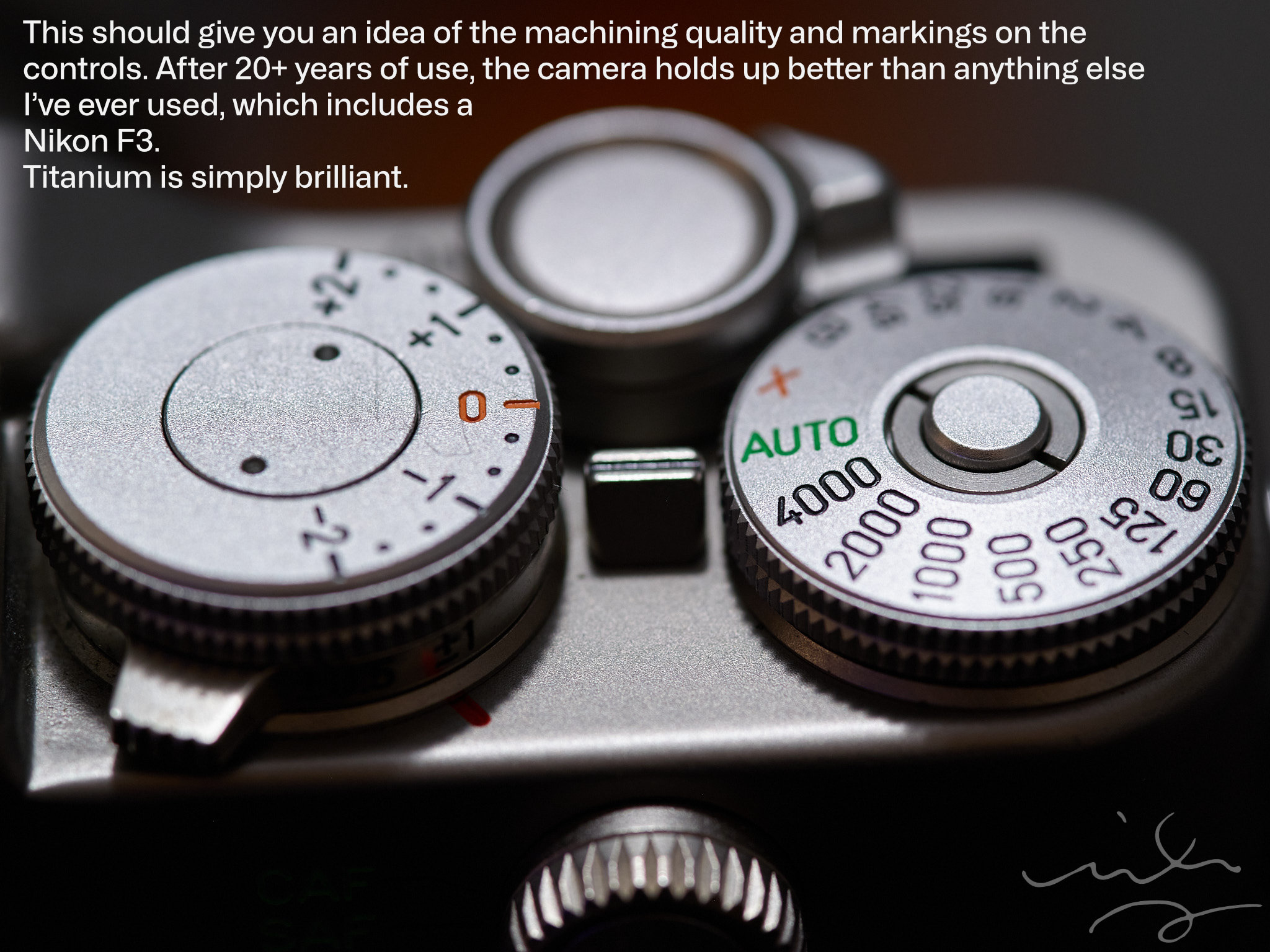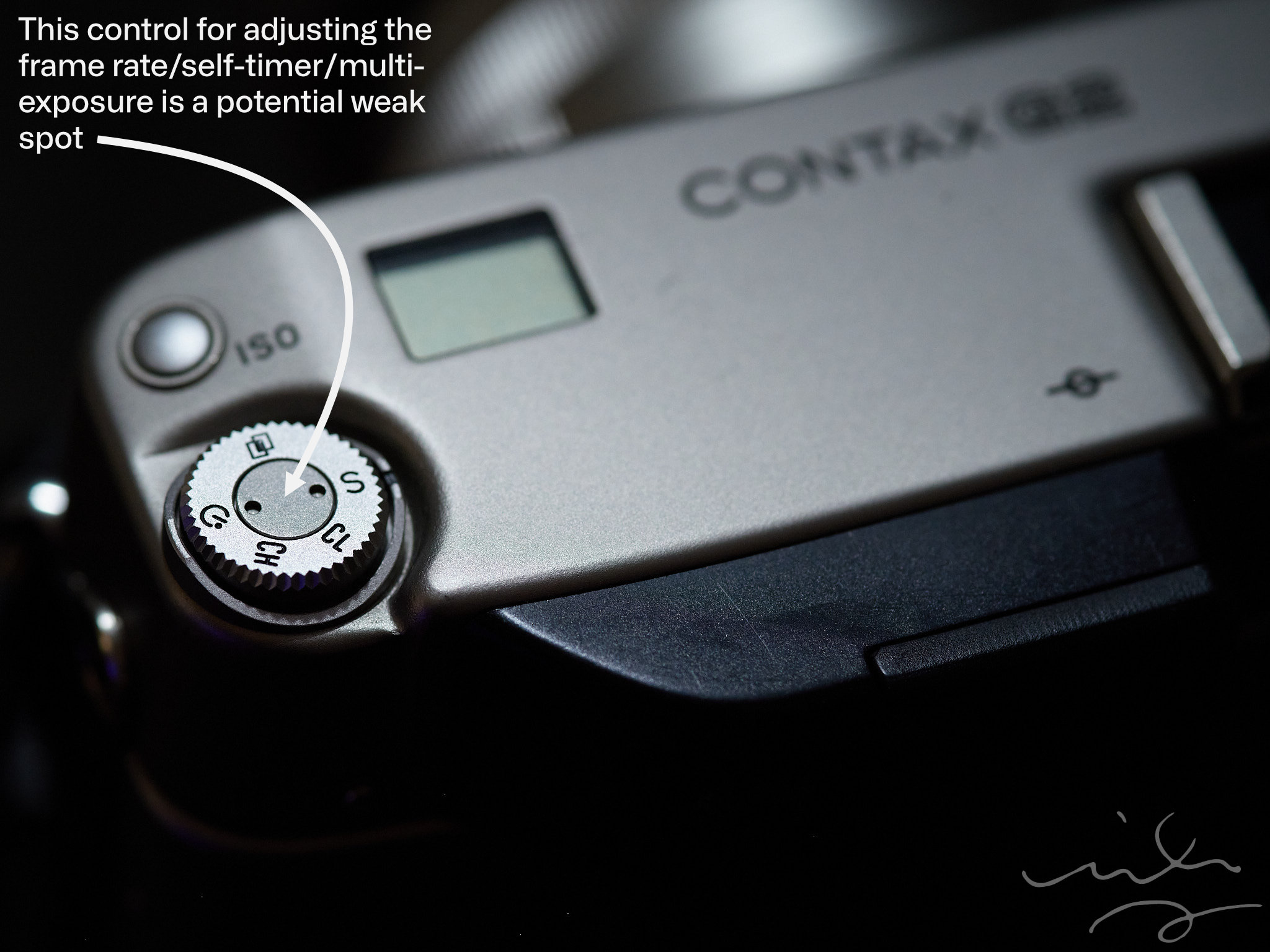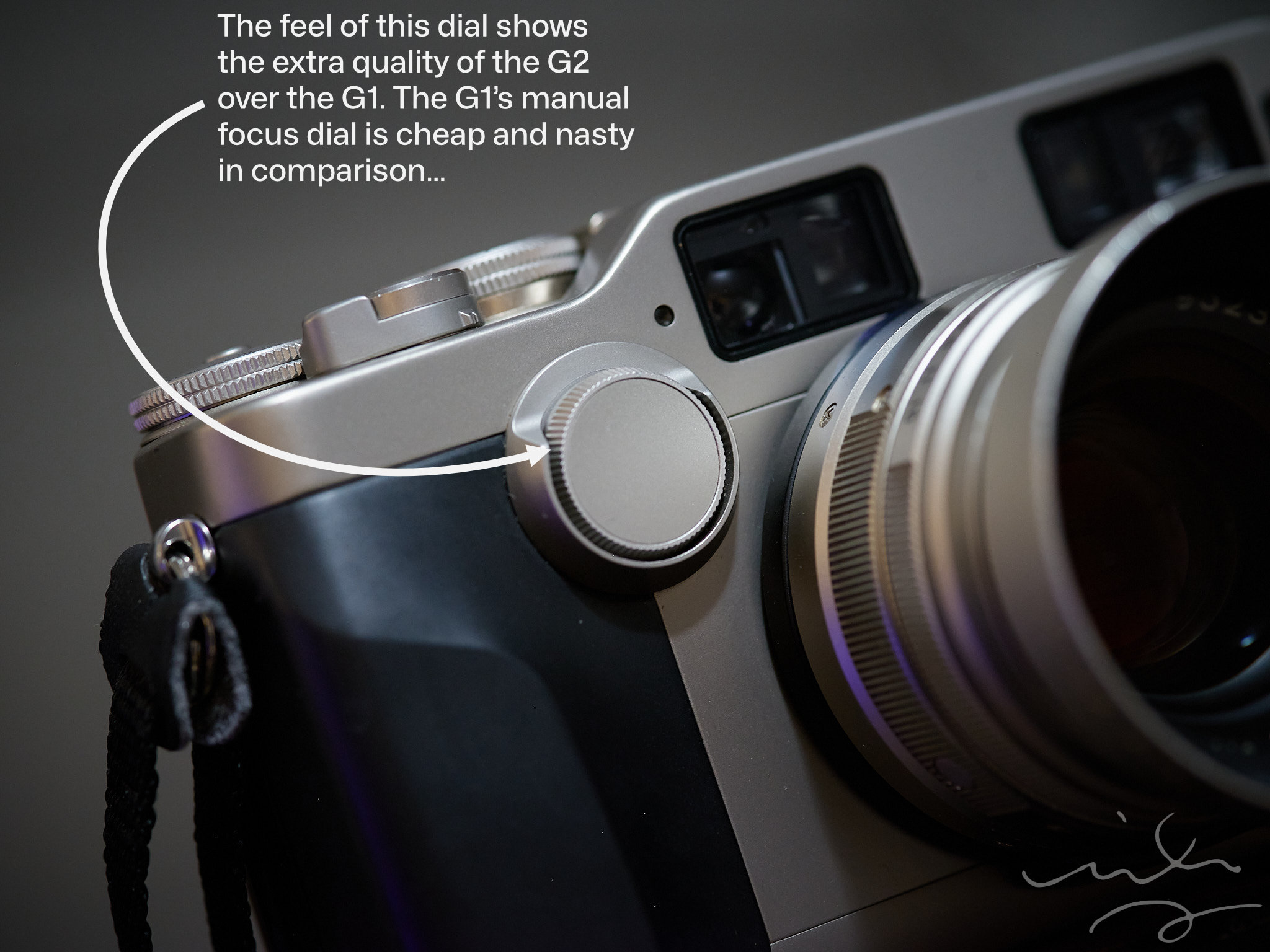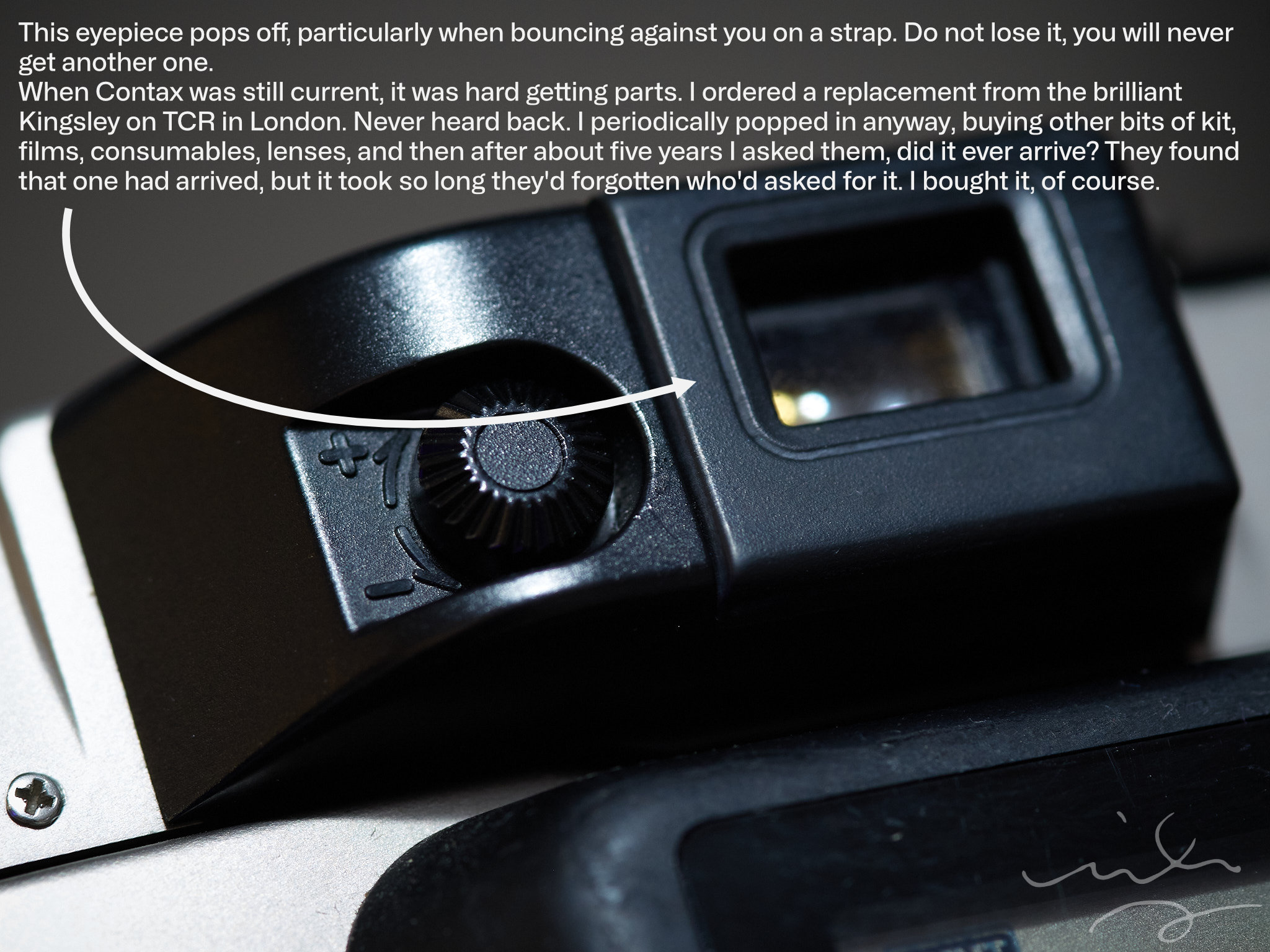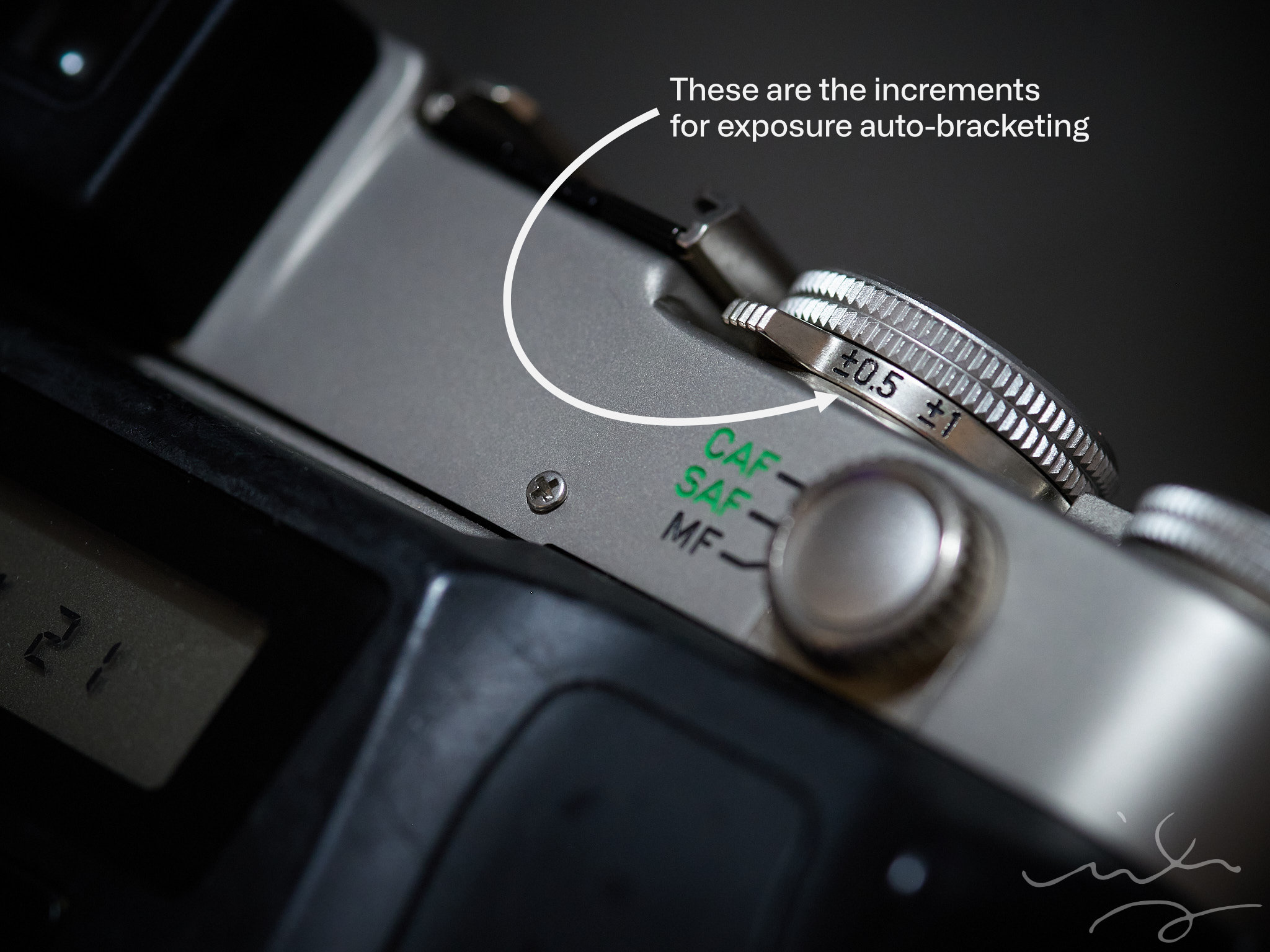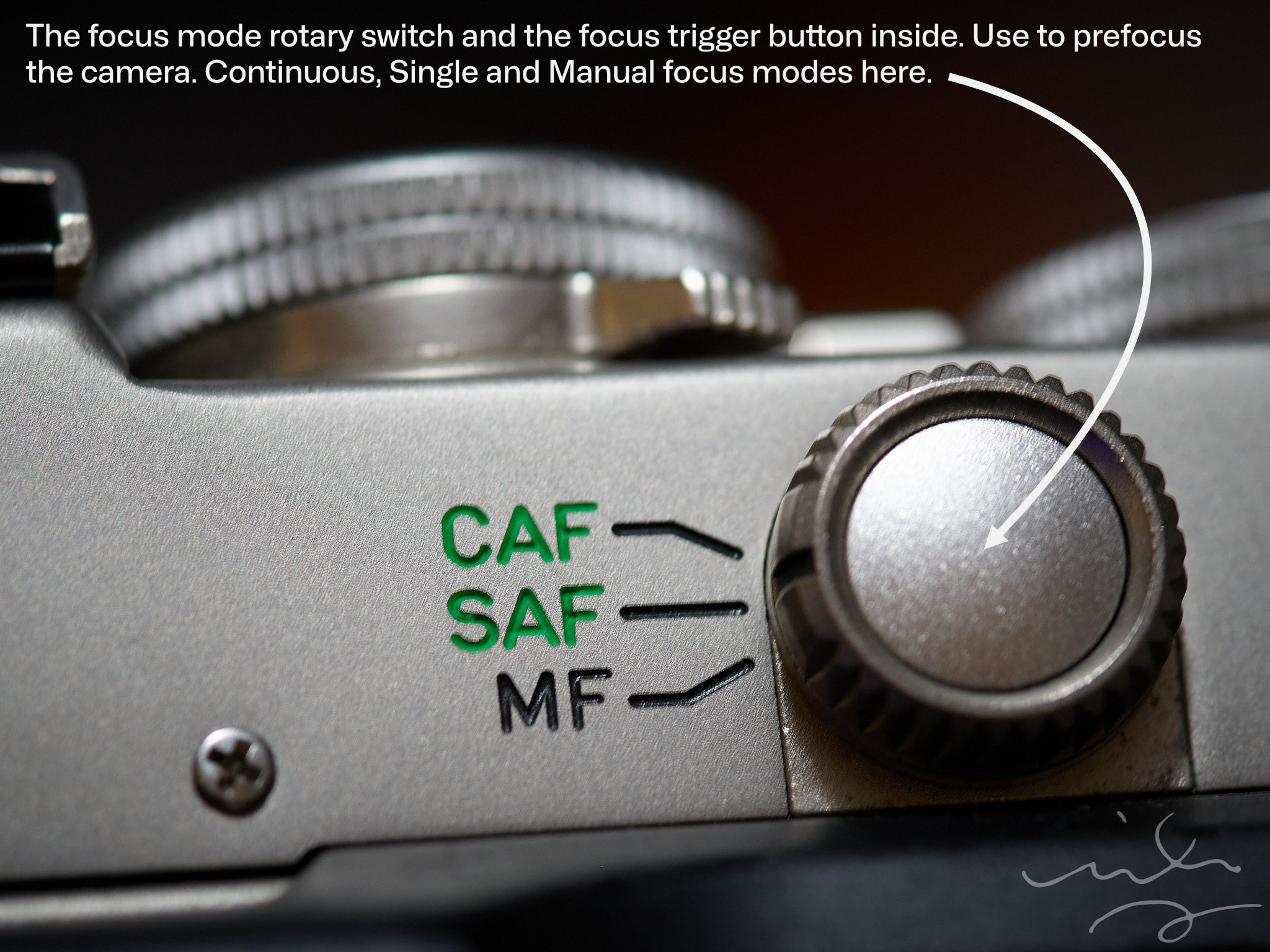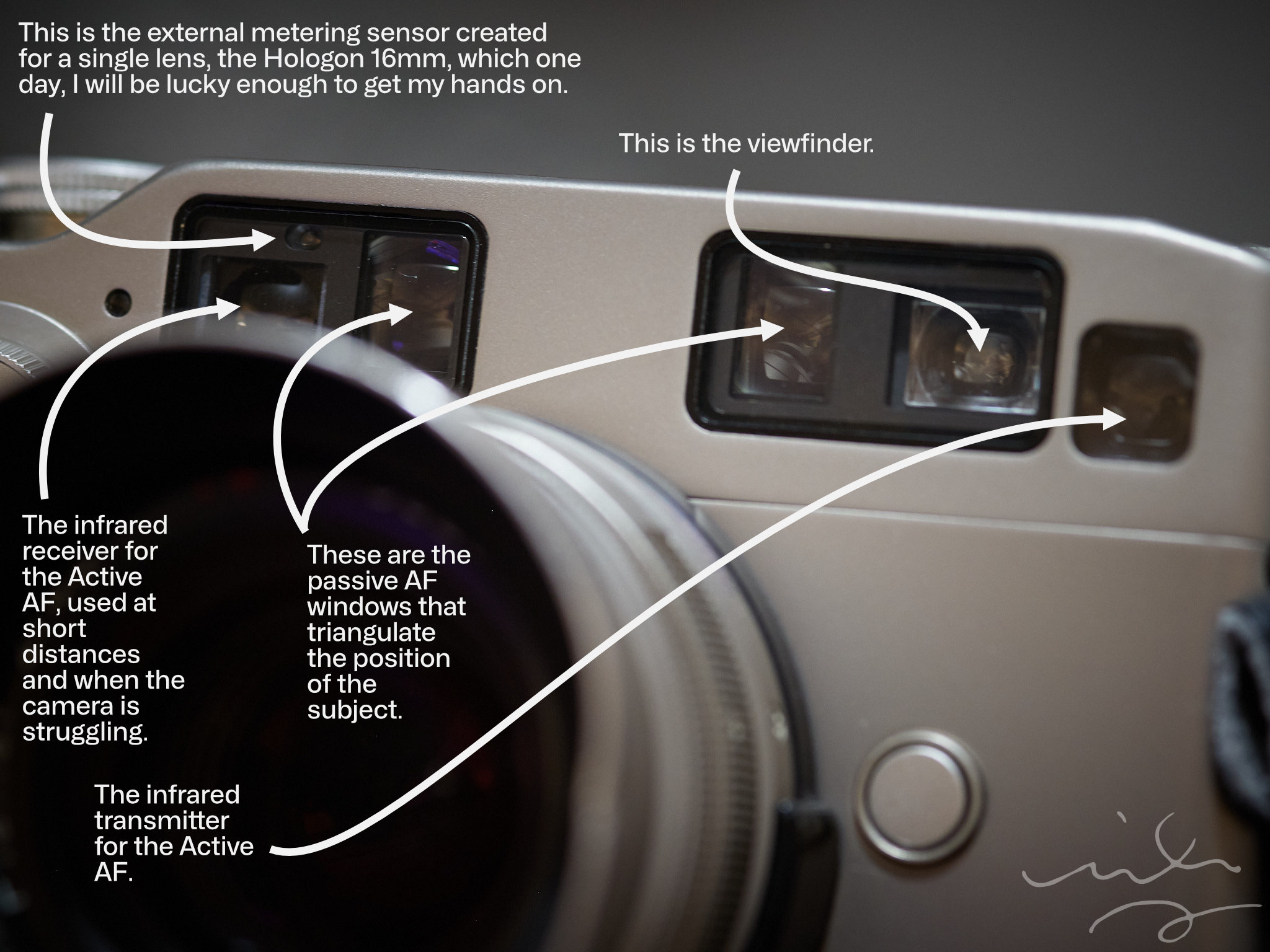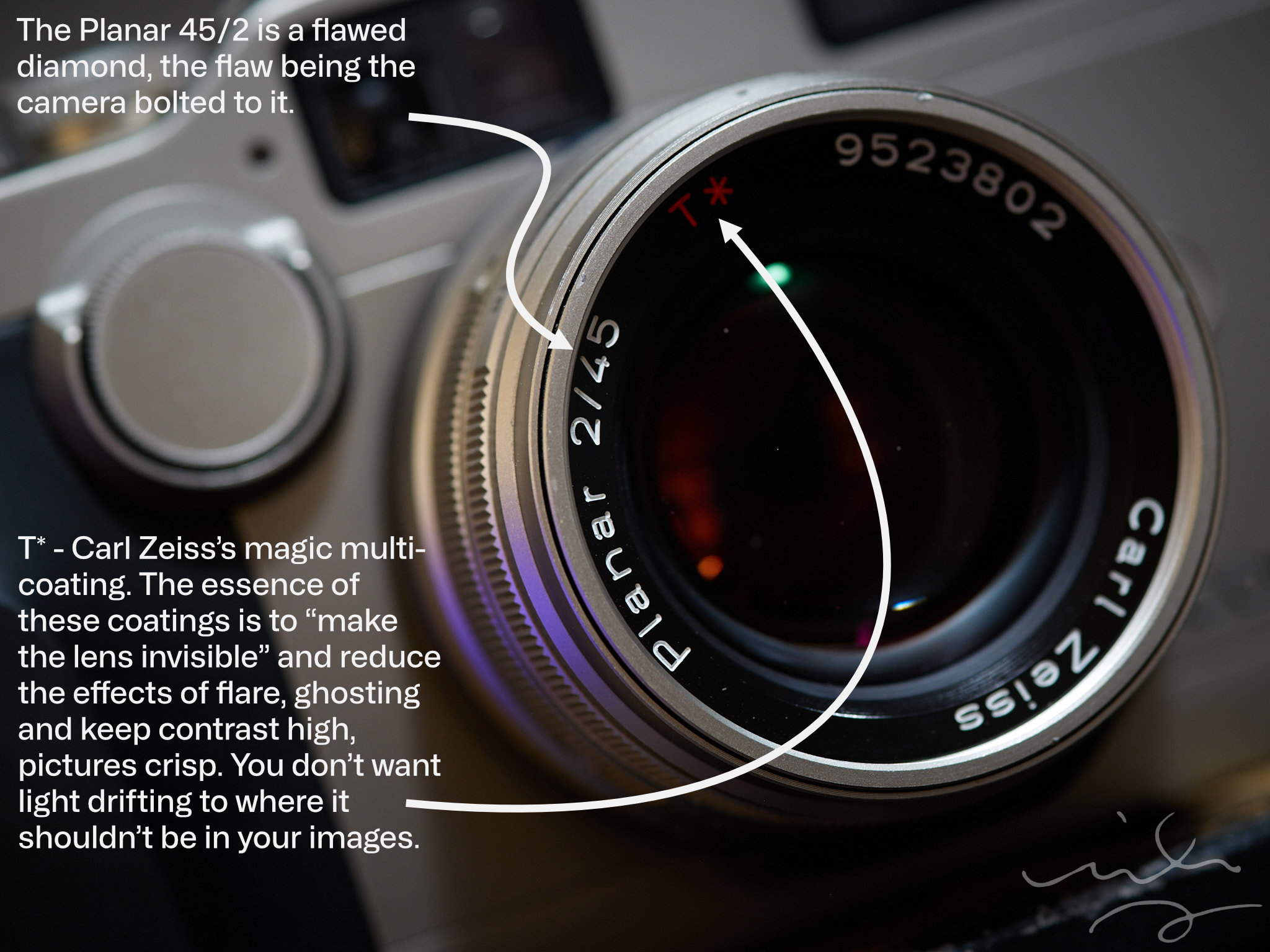Contax G2 Visual Guide
A Visual Guide to the Contax G2
The G2 is considerably more impressive and effective a camera compared to the G1 and the features and performance are integrated very smoothly into the body, so it’s hard to see the differences.
I’m going to outline a bunch of things about the G2 for people who aren’t familiar with it.
The top plate controls on the right.
The exposure compensation dial is easily accessible, where it should be. No locks or catches.
The shutter speed dial doesn’t hit the 1/6000s top-speed available in auto.
The top plate controls on the left.
I consider this a slight weak spot as I’ve had two cameras where these controls get loose. If you feel any play in this control, get the right tool and tighten it up. You’ll need a fine pig nose wrench or a snake eyes bit for a screwdriver. I would prefer you NOT to use the snake eyes bit as it’s likely to damage the bolt, but it will work if you’re stuck.
The adjustment dial
Used for manual focus, amongst other things. The markings of the electronic rangefinder in the viewfinder sync up with the movement of this dial perfectly.
The manual focus dial on the G1 has no feel and quite a bit of play compared to this solid dial.
The stupid eyepiece
The G1 didn’t have a soft eyepiece, it was made of solid, vicious plastic, and never changed. The G2 had a soft rubbery fitted eyepiece that clearly designated luxury and good taste, but also popped off during the bouncing and ricocheting off one’s person during daily use. Don’t buy a G2 without one. They’re too overpriced to have bits missing.
Auto-bracketing
Less of a thing these days but boy did I want this feature so bad back in the day. Film latitude was nothing like today’s sensors, so automatically taking extra shots with slightly different exposures was fantastic. This feature has never found a standard for its control and implementation range from excellent to effectively useless.
The G2’s implementation is excellent, possibly the best ever. A single dial, under exposure compensation, simply clicked out to whatever you would like the exposure difference between shots to be, and the camera will take three shots at those intervals. Turn it back when done.
Nikon, you idiots
In contrast, the F90x, the highest-specified camera in Nikon’s range until the F5 showed up, required the MF-26 back to add this feature, and to set this, these were the steps:
- open control flap of multi-function back
- press the function button while turning the command dial to select sequence functions
- press the mode button while turning the command dial to select the bracket mode
- press the select button while turning the command dial to choose the frame mode
- press the adjust button while turning the command dial to select the number of frames you want to shoot
- press the adjust button again while turning the command dial to select the exposure interval between frames
- press the select button while turning the command dial until the lights stop blinking to set the function
- press the set button to activate the autobracketing
- press the shutter to take the pictures
Focus Button and Dial
Where the magic happens. Practice with this button will help your hit rate by using prefocusing to prevent hunting or missed focus. Focusing is one of the painful points of this camera for many people, like my pal Miles, who absolutely hates the camera. For someone like me, the Single AF is the right choice, and Continuous AF is about as useful as a chocolate teapot. If I need to take pictures with Continuous AF, then what I actually need is a totally different camera. By all means, get good with the G2, burn some film and practice, but Continuous AF generally sucks in any camera before about 2016, let alone in a camera from 1996.
Manual focusing isn’t really the same on the G2 as it is with an SLR. Either you use the electronic rangefinder in the viewfinder to focus, or you measure the distance and then focus to that distance using the distance display on one of the top LCDs.
The Front View: Focusing, Metering and Viewing
Where the magic really happens. Only Contax have ever made an autofocus, interchangeable lens rangefinder, and the G2 is a triumph of the constraints. With limited room to manoeuvre, Contax crammed two AF systems, external metering and the viewfinder into the top of the camera. The little round spot to the left of everything not marked on the picture is the self-timer light.
Strategically, they mapped out the entire G system very well, aside from some early G1s that needed upgrading (green label vs non), and the entire lens range was known early on - except for the nice surprise of the Vario-Sonnar in 1999 - so the coupled, zooming viewfinder was a lovely piece of work, especially for those coming from the Leica world where a 0.8 viewfinder meant nothing with a slightly longer lens.
Some people blather on about being able to see around the framelines on a Leica as some huge benefit in composition, and it sounds like complete nonsense to me. It just adds to the inaccuracy of the whole enterprise and a lot of photography is about precision and marginal changes. No SLR or mirrorless camera user moans about this supposed constraint. The G viewfinder is really good, and parallax-corrected. It is a bit small, though.
That strategy meant putting an external meter on the front just in case they made a lens that wasn’t so TTL friendly, like the fixed-aperture Hologon 16mm f8. I’ve touched this lens once and it is a thing of beauty, there’s almost nothing to it, but the results are reputedly excellent.
The 45mm, the greatest standard lens of all time
The Carl Zeiss Planar 45/2 is so obscenely good that I am still absolutely captivated by it more than 20 years later. The results are amazing, and I’ve never found an SLR lens that comes close. When I bought a Leica M9 in 2009, I also picked up the Carl Zeiss Planar 50/2 ZM in the hope that it might render the same way. Utterly stunning though that lens was, it wasn’t quite the 45/2. Standard Contax G kits came with this lens and honestly, if I had to shoot with one lens for the rest of my life, it would be this one. Everything is perfect, it’s sharp in the sharp bits, smoothly tails off, provides a beautiful three-dimensionality to pictures and having tested it on modern digital cameras, have seen how over-engineered it was at the time. It’s still perfect.
Contax G2 Visual Guide
https://vishvish.com/reviews/contax-g-part-2-visual-guide-to-g2/
